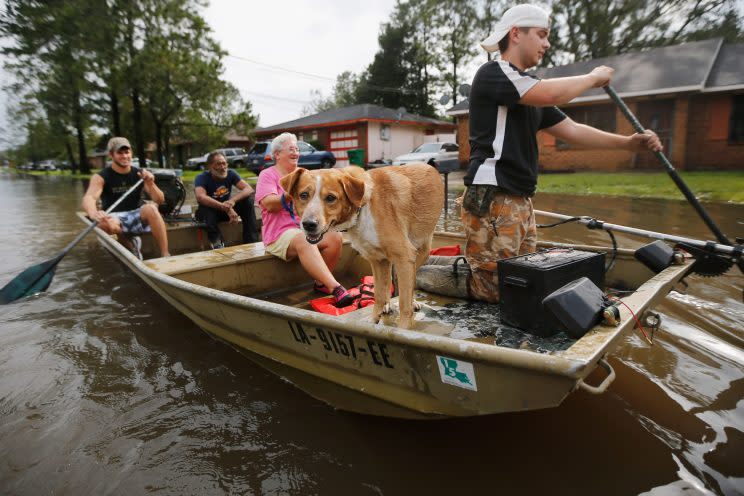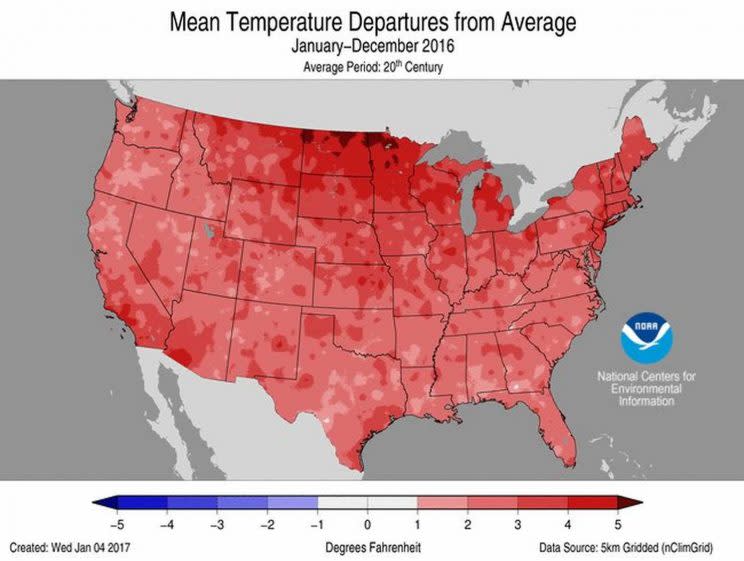US climate disasters are becoming more common — and most costly

There were 15 weather or climate events last year in the US that caused collective damage exceeding $1 billion. The events included drought, wildfire, four inland flood events, eight severe storm events, and a tropical cyclone event, according to a report from the National Oceanic and Atmospheric Administration (NOAA).
That’s the second-highest number of billion-dollar disasters ever recorded, behind just 2011 when 16 such events occurred.
The 2016 events resulted in a total of 138 deaths and more than $46 billion in direct costs. That’s compared to 764 deaths and $71.6 billion in damage over 16 events in 2011 (a year with considerable tornado damage).

The deadliest of those events was Hurricane Matthew, which killed 49 people along the Southeast coast in October. The hurricane was also tied for the most costly disaster of the year, with an estimated $10 billion in damage. The historic flooding in Louisiana in August also caused approximately $10 billion in damage.
The U.S. has seen a sharp increase in the number of events causing significant amounts of damage in recent years. From 1980-2016, there were an average of just 5.5 billion-dollar events (adjusted for inflation) per year. For the five most recent years (2012-2016), that number has almost doubled to 10.6 events per year.

Multiple factors have led to this increase in damage potential, including an increase in population and material wealth.
“These trends are further complicated by the fact that many population centers and infrastructure exist in vulnerable areas like coasts and river floodplains, while building codes are often insufficient in reducing damage from extreme events,” according to NOAA.
The report states that climate change is “probably also playing a role in the increasing frequency of some types of extreme weather.” The average temperature in 2016 was 2.9 degrees Fahrenheit above the 20th-century average, making it the second-warmest year on record.

Every state in the contiguous U.S. had an average temperature among the warmest seven in NOAA’s 122 years of record keeping. All but five states (Iowa, Maine, Nevada, Oregon and Utah) had one of their warmest five years.
“No other year had as many states breaking or close to breaking their warmest annual average temperature,” according to the agency.

 Yahoo Sport
Yahoo Sport 






































